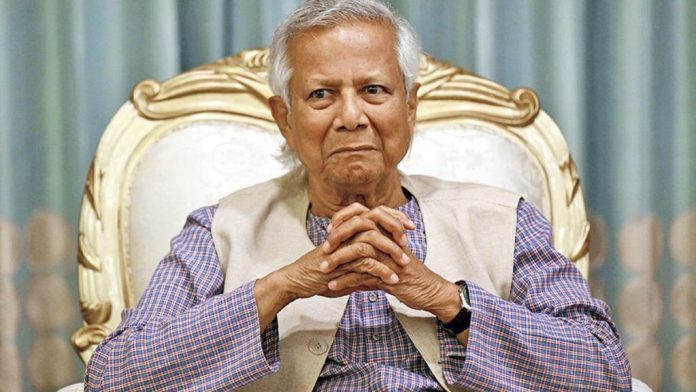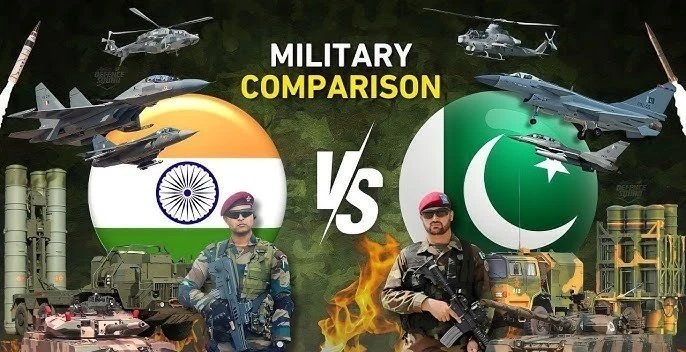Are Mumbai and Maharashtra prepared for India-Pakistan War: सीएम फडणवीस ने लिया मुंबई और महाराष्ट्र की सुरक्षा और तैयारियों का जायजा
Mumbai Maharashtra Security on India-Pakistan War: भारत और पाकिस्तान के बीच बढ़ते तनाव के मद्देनजर महाराष्ट्र के मुख्यमंत्री देवेंद्र फडणवीस ने मुंबई और महाराष्ट्र की सुरक्षा व्यवस्था और आपात तैयारियों की समीक्षा की। मुंबई में हुई इस उच्चस्तरीय बैठक में उपमुख्यमंत्री एकनाथ शिंदे भी मौजूद थे। मुख्यमंत्री ने इस दौरान पुलिस और प्रशासनिक अधिकारियों से राज्य की संपूर्ण सुरक्षा, सज्जता, ब्लैकआउट, साइबर निगरानी और जन जागरूकता की वर्तमान स्थिति पर फीडबैक लिया और कई आवश्यक निर्देश जारी किए।
Are Mumbai Maharashtra prepared for India-Pakistan War: मुख्यमंत्री फडणवीस द्वारा बैठक में दिए गए निर्देश इस प्रकार हैं:
1. हर जिले में मॉक ड्रिल और वॉर रूम की स्थापना
मुख्यमंत्री ने सभी जिलों में मॉक ड्रिल आयोजित करने का निर्देश दिया ताकि आपात स्थिति में त्वरित कार्रवाई सुनिश्चित की जा सके। प्रत्येक जिले में जिला स्तर पर वॉर रूम बनाए जाने को कहा गया है।
2. ब्लैकआउट की स्थिति में अस्पतालों के लिए विशेष व्यवस्था
बिजली बंद रहने की स्थिति में अस्पतालों की सेवाएं बाधित न हों, इसके लिए वैकल्पिक बिजली व्यवस्था सुनिश्चित करने के निर्देश दिए गए हैं। अस्पतालों में गहरे रंग के पर्दे या शीशों का उपयोग किया जाए ताकि रोशनी बाहर न जाए।
3. जन जागरूकता के लिए वीडियो और अभियान
“ब्लैकआउट क्या है और उससे कैसे निपटें?” इस पर आधारित वीडियो विद्यार्थियों और नागरिकों तक पहुंचाएं। व्यापक जन जागरूकता अभियान चलाने के निर्देश भी दिए गए।
4. ‘यूनियन वॉर बुक’ का अध्ययन
केंद्र सरकार की यूनियन वॉर बुक का गहन अध्ययन करने को कहा गया है ताकि सभी अधिकारी उसकी जानकारी से लैस हों।
5. छुट्टियों पर रोक
राज्य के सभी महत्वपूर्ण पदों पर, खासकर स्वास्थ्य और आपदा प्रबंधन विभाग के वरिष्ठ अधिकारियों की छुट्टियां रद्द की गई हैं।
6. साइबर सेल की निगरानी और कार्रवाई
सभी जिलों के साइबर सेल को सोशल मीडिया पर निगरानी बढ़ाने के निर्देश दिए गए हैं। पाकिस्तान को मदद पहुंचाने वाले सोशल मीडिया हैंडल्स की पहचान कर उन पर कार्रवाई करने को कहा गया है। राष्ट्रविरोधी गतिविधियों या झूठी सूचना प्रसारित करने वालों पर सख्त कार्रवाई के आदेश दिए गए हैं।
7. आपातकालीन फंड और त्वरित स्वीकृति
सभी जिलाधिकारियों को आपातकालीन फंड उसी दिन जारी किया गया, जिससे तात्कालिक जरूरतों की पूर्ति हो सके। कोई भी महत्वपूर्ण प्रस्ताव हो तो उसे एक घंटे में मंजूरी देने का आदेश दिया गया है।
8. महापालिकाओं और सोसाइटियों को जागरूक करें
मुंबई महानगर क्षेत्र (MMR) की सभी महापालिकाओं को बैठक कर ब्लैकआउट की जानकारी देने और जनभागीदारी बढ़ाने को कहा गया। हाउसिंग सोसायटीज को भी इस अभियान में शामिल किया जाए।
9. पुलिस को अतिरिक्त सतर्कता और कड़ी गश्त
पुलिस विभाग को सामान्य से अधिक सतर्क रहने को कहा गया है। देशद्रोही गतिविधियों की आशंका को देखते हुए कोंबिंग ऑपरेशन और गश्त बढ़ाने के निर्देश दिए गए।
10. सैन्य गतिविधियों की रिकॉर्डिंग अपराध
सेना की तैयारियों से संबंधित किसी भी गतिविधि की वीडियो रिकॉर्डिंग और उसे सोशल मीडिया पर डालना दंडनीय अपराध घोषित किया गया है। ऐसा करने वालों पर तत्काल मुकदमा दर्ज करने को कहा गया है।
11. समुद्री सुरक्षा के लिए ट्रॉलर्स किराए पर लें
समुद्री सुरक्षा बढ़ाने के लिए जरूरत के अनुसार फिशिंग ट्रॉलर्स को किराए पर लेने की अनुमति दी गई है।
12. नागरिकों तक सही और अद्यतन जानकारी पहुंचे
जनता को वास्तविक और अद्यतन जानकारी उपलब्ध कराने के लिए शासन की ओर से विशेष संचार व्यवस्था की जाएगी।
13. साइबर विभाग से इन्फ्रास्ट्रक्चर ऑडिट
राज्य की महत्वपूर्ण आधारभूत संरचनाएं जैसे बिजली उत्पादन और वितरण इकाइयों पर साइबर अटैक की आशंका को देखते हुए साइबर विभाग को तत्काल साइबर ऑडिट करने का आदेश।
14. सैन्य समन्वय के लिए तिन्ही दलों की बैठक
मुंबई में स्थित सेना की तीनों इकाइयों और कोस्ट गार्ड के प्रमुखों को आगामी बैठक में वीडियो कॉन्फ्रेंसिंग के माध्यम से आमंत्रित करने के निर्देश।
15. एजेंसियों के साथ समन्वय
मुख्यमंत्री देवेंद्र फडणवीस ने कहा कि वर्तमान परिस्थिति में राज्य सरकार पूरी तरह सतर्क और युद्धस्तर पर तैयार है। उन्होंने सभी प्रशासनिक और सुरक्षा संस्थाओं को निर्देशित किया कि वे आपस में समन्वय बनाकर किसी भी आपात परिस्थिति से निपटने की पूरी तैयारी रखें।
Heightened Security Along Bengal Coast Amid Rising India-Pakistan Tensions
Kolkata, India: As tensions between India and Pakistan continue to escalate following cross-border hostilities, security measures have been significantly intensified along West Bengal’s coastal belt, particularly in the South 24 Parganas district. The move comes amid fears of possible infiltration attempts or maritime threats along the Bay of Bengal.
Surveillance Stepped Up in Sensitive Coastal Zones
Beginning Thursday evening, coastal surveillance operations were ramped up, with security agencies placed on high alert across key locations along the Bay of Bengal. The situation prompted a swift response from law enforcement, especially in areas deemed vulnerable due to their proximity to the coast and international maritime routes.
Sundarbans Police Boost Riverine Patrols
On Friday morning, police in the South 24 Parganas district reinforced their presence in coastal blocks such as Gangasagar, Namkhana, Patharpratima, Canning, Gosaba, and Basanti. The Sundarban Police District also deployed additional speedboats for patrolling estuaries, creeks, and remote riverine zones that are often used by infiltrators or smugglers.
Superintendent of Police (Sundarban District) Koteshwar Rao confirmed that all coastal police stations have been put on the highest level of alert. Round-the-clock monitoring operations have been initiated, with mobile patrols and boat units scanning both inland waterways and shoreline stretches.
Fears of Infiltration Amid Cross-Border Escalation
The enhanced vigilance in Bengal’s coastal districts follows intelligence inputs warning of possible infiltration attempts by hostile elements taking advantage of the ongoing India–Pakistan military standoff. Central and state intelligence agencies are working in tandem to prevent any breach of national security from the eastern seaboard.
Pakistan Faces Heavy Retaliatory Action
Meanwhile, unconfirmed reports from defence sources suggest that Pakistan is facing substantial retaliatory strikes following its recent acts of aggression. Though the bulk of the conflict remains concentrated along the western front and the Line of Control (LoC), security forces remain wary of multi-front threats, including coastal infiltration or sabotage operations.
CSR News: Over 500,000 Meals for Delhi’s Government School Children through CSR
India Yamaha Motor Pvt. Ltd. has reaffirmed its commitment to social responsibility by signing two pivotal Memorandums of Understanding with The Akshaya Patra Foundation. This partnership underscores Yamaha’s dedication to fostering community welfare and aligns with its corporate philosophy of contributing to societal betterment. By supporting The Akshaya Patra Foundation, an esteemed partner of the Government of India’s PM POSHAN Programme, Yamaha aims to make a significant impact by providing over 5lakh nutritious meals to government school children in Delhi, demonstrating its proactive role in nurturing the nation’s future generations.
Under the first Memorandum of Understanding (MoU), which took effect from July 2024 to November 2024, India Yamaha Motor proudly supported The Akshaya Patra Foundation’s initiatives in Delhi. Through this CSR partnership, Yamaha aided The Akshaya Patra Foundation in successfully delivering over 2.3lakh mid-day meals to more than 2,200 children across 13 government schools in Delhi.
Building on this impactful initiative, India Yamaha Motor has further strengthened its commitment by signing a second MoU in the same region. This new agreement, which isactive from February 2025 to October 2025, will enable The Akshaya Patra Foundation to deliver over 3lakh meals to 2,500 children across 7 government schools in Delhi.
Speaking about the initiative Mr. Atushi Nagashima, Director, Yamaha said, “The Company is proud to work with The Akshaya Patra Foundation in the mission to address classroom hunger and improve educational outcomes. Through this collaboration, we aim to contribute meaningfully to the well-being of children by ensuring access to nutritious midday meals, thereby enabling them to pursue their education with focus and dignity. We firmly believe that consistent access to nutrition not only enhances learning but also promotes long-term health and social development. We remain committed to supporting initiatives that create lasting, positive impact in the communities.”
Speaking on the partnership, Mr.Dhananjay Ganjoo, Chief Resource Mobilization & Marketing Officer, The Akshaya Patra Foundation, said, “India Yamaha Motor’s contribution will help in providing over 5 Lakh meals from July 2024 – November 2024 and February 2025 – October 2025 meals to the govt. school children in Delhi. This collaboration will positively impact the lives of thousands of children in Delhi, encouraging their academic growth and well-being.”
These meals will empower thousands of students to focus on their education and build a brighter future. Together, India Yamaha Motor and Akshaya Patra make strong strides towards enhancing educational outcomes and community well-being.This joint endeavor reaffirms the belief that when businesses and non-profits come together with a shared vision, they can create lasting, transformative changes for generations to come.
Disclaimer: This media release is auto-generated. The CSR Journal is not responsible for the content.
CSR News: ‘Cycles of Hope’ Initiative Empowers Tribal Students in Uttar Pradesh
Sonbhadra, Uttar Pradesh: In a step toward making education more accessible for children in remote tribal areas, Avaada Foundation distributed bicycles to 150 students from the remote tribal villages of Chichlik, Basuhari, Adgud and Channi in Uttar Pradesh’s Sonbhadra district. This initiative, titled ‘Cycles of Hope’, is aimed at supporting children who have to walk long and difficult routes to reach school.
Speaking at the event, Ritu Patwari, Director of Avaada Foundation, said: “We believe education is key to a society’s holistic development. These bicycles will not only make it easier for children to attend school, but also boost their confidence and self-reliance. Our goal is to ensure that every child can reach their dreams without obstacles.”
Avaada Foundation has been consistently working for over a year in these underserved villages of Sonbhadra, focusing on education, empowerment and health. Key initiatives include:
Installation of solar-powered lights
Provision of drinking water facilities
Organizing cricket matches and cultural programs
Supplying inverters and libraries to government schools
Development of playgrounds
Distribution of uniforms, school bags, and shoes to children
Providing clothing to village residents
Appointment of teachers in local schools
Facilitating educational trips for students
Additionally, the Foundation has distributed nutritious ration kits to provide children and their families with balanced diets. Women have been trained in kitchen gardening and provided with seeds and saplings, enabling them to grow fresh, healthy vegetables for household use.
The bicycle distribution program was attended by the District Basic Education Officer, Avaada Foundation Directors Mr. Jay Shankar Shukla and Mr. Mahesh Mathur, Block Education Officers (Kon and Nagwa), Gram Pradhan from Basuhari village, local police station officials and other distinguished guests. The event also saw enthusiastic participation from local residents and parents.
Avaada Foundation strongly believes that education and nutrition are both essential to the holistic development of every child. No social or geographical barrier should ever stand in the way of these fundamental rights.
Disclaimer: This media release is auto-generated. The CSR Journal is not responsible for the content.
What are Anti-Tank Guided Missiles Used to Strike Pakistani Military Posts?
As tensions continue to rise along the Line of Control (LoC), the Indian Army has launched a targeted assault on Pakistani military posts using Anti-Tank Guided Missiles (ATGMs). This marks a significant escalation following the tragic Pahalgam terror attack that claimed the lives of 26 civilians, triggering a chain of military responses.
The Function and Strategy Behind ATGMs
ATGMs are advanced missile systems specifically engineered to destroy armored vehicles like tanks. They operate using precision guidance systems, making them far more effective than conventional anti-armor weapons. Designed for deployment from shoulder launchers, vehicles, aircraft, and drones, these weapons allow soldiers to engage targets from safe distances without direct exposure.
Many of today’s ATGMs come equipped with dual-mode seekers for better accuracy and night vision capabilities, making them useful in both day and night operations.
India’s Tactical Response and Background of Conflict
The deployment of ATGMs comes in the aftermath of Operation Sindoor, during which the Indian Armed Forces conducted high-precision airstrikes deep inside Pakistan and Pakistan-Occupied Kashmir (PoK). These strikes, conducted earlier this week, were in retaliation for the mass civilian killings in Pahalgam.
The Pakistani military retaliated with drone and missile strikes aimed at Indian bases in Jammu, Pathankot, and Udhampur, but India’s air defence systems successfully intercepted more than 50 drones, preventing any significant damage on Indian soil.
What Makes ATGMs So Effective?
Most ATGMs use a shaped charge warhead, which focuses explosive energy in one direction to breach thick armor. Advanced systems also include tandem warheads the first charge disables explosive reactive armor (ERA), and the second penetrates the tank’s main defense.
Some models are equipped with “top-attack” technology, allowing them to strike tanks from above where armor is usually weakest. These missiles can track and strike moving targets with precision thanks to their sophisticated seekers.
India’s Indigenous Missile Programs
India’s Defence Research and Development Organisation (DRDO) has been developing cutting-edge ATGM systems that meet global standards. These include High Explosive Anti-Tank (HEAT) warheads designed to pierce even ERA-protected vehicles. These indigenous missiles have enhanced India’s battlefield capabilities, offering flexibility and precision in high-risk zones.
How Modern Tanks Defend Against ATGMs
To counter the threat posed by ATGMs, modern armored vehicles incorporate various protective measures. These include reactive armor, slat armor, and signal jammers that either disrupt the missile’s guidance or reduce its impact.
Some advanced tanks, like Israel’s Merkava, employ Active Protection Systems (APS) such as the Trophy system, which can detect and shoot down incoming missiles. Other countermeasures include deploying smoke screens or engaging the missile operator before launch. However, “fire-and-forget” missiles, which require no post-launch control, have reduced the effectiveness of such tactics.
For over two weeks, Pakistani forces have violated the ceasefire across the LoC, prompting strong Indian retaliation. The situation escalated following the Pahalgam attack, pushing both nations closer to the brink of conflict. With the deployment of ATGMs, India has sent a strong signal of deterrence, underlining its readiness to respond decisively to continued provocation.
India vs Pakistan Military Power Comparison 2025: जमीन, समंदर और आसमान में किसका पलड़ा भारी?
India vs Pakistan Military Power Comparison 2025: जानिए सेना, एयरफोर्स, नेवी, मिसाइल और परमाणु ताकत में कौन कितना मजबूत है
India vs Pakistan Military Power Comparison 2025: 7 मई की सुबह भारत ने एक बड़ा सैन्य अभियान ऑपरेशन सिंदूर शुरू कर पाकिस्तान और पाकिस्तान अधिकृत कश्मीर (PoK) में स्थित 9 आतंकी ठिकानों पर सर्जिकल स्ट्राइक की। इन ठिकानों का इस्तेमाल लश्कर-ए-तैयबा, जैश-ए-मोहम्मद और हिजबुल मुजाहिदीन जैसे आतंकी संगठन लंबे समय से कर रहे थे। ऑपरेशन का मकसद इन संगठनों की बुनियादी ढांचे को नष्ट करना था। जो भारत ने किया उससे तिलमिलाए पकिस्तान ने भारत पर हमला करके मासूमों को टारगेट किया, इसका जवाब भारत ने भी करारा जवाब दिया। 22 अप्रैल को जम्मू-कश्मीर के पहलगाम में हुए आतंकी हमले में 26 नागरिकों की मौत के बाद से ही भारत की तरफ से जवाबी कार्रवाई की तैयारी चल रही थी। 29 अप्रैल को प्रधानमंत्री नरेंद्र मोदी ने शीर्ष सुरक्षा अधिकारियों के साथ बैठक में भारतीय सेना को जवाबी कार्रवाई की पूरी छूट दी थी। इस बैठक में रक्षा मंत्री राजनाथ सिंह, राष्ट्रीय सुरक्षा सलाहकार अजित डोभाल और चीफ ऑफ डिफेंस स्टाफ जनरल अनिल चौहान मौजूद थे।
India vs Pakistan Military Power Comparison 2025: पाकिस्तान की प्रतिक्रिया और बढ़ता तनाव
भारत की कार्रवाई के बाद पाकिस्तान ने शिमला समझौते को स्थगित कर दिया, अपने तटीय इलाकों में मिसाइल परीक्षण किए और भारत के साथ व्यापार एवं वीजा सेवाएं बंद कर दीं। भारत ने भी कड़ी प्रतिक्रिया देते हुए सिंधु जल संधि को निलंबित किया, अटारी बॉर्डर पोस्ट को बंद किया और पाकिस्तानी नागरिकों के वीजा रद्द किए। दोनों देशों ने अपने-अपने दूतावासों से राजनयिकों की संख्या भी घटा दी है।
Military Power of India and Pakistan 2025: भारत बनाम पाकिस्तान की ताकत का विश्लेषण
इस बढ़ते तनाव के बीच जानिए कि भारत और पाकिस्तान की सैन्य ताकत किस स्तर पर है और तीनों सेनाओं – थल, वायु और नौसेना – में कौन किससे आगे है।
सेना, बजट और सैनिक बल: भारत का भारी पलड़ा
India Global Firepower Index 2025 में चौथे स्थान पर है जबकि Pakistan बारहवें स्थान पर है। भारत के पास 14.6 लाख एक्टिव सैनिक हैं और 11.5 लाख रिजर्व में। पाकिस्तान के पास 6.54 लाख एक्टिव सैनिक हैं और 5 लाख अर्धसैनिक बल के जवान हैं। भारत का रक्षा बजट लगभग $79 बिलियन (₹6.81 ट्रिलियन) है, जो पिछले साल से 9.5% ज्यादा है। पाकिस्तान का रक्षा बजट $7.6 बिलियन (₹2.28 ट्रिलियन) है, जो भारत से काफी कम है। Defence budget of India vs Pakistan 2025, Military Personnel Comparison of India and Pakistan
ज़मीन पर कौन मजबूत: टैंक और बख्तरबंद गाड़ियां
भारत के पास 4,200+ टैंक हैं, जिनमें T-90 भीष्म और अर्जुन शामिल हैं। पाकिस्तान के पास 2,627 टैंक हैं। भारत की 1,48,594 बख्तरबंद गाड़ियां पाकिस्तान की तुलना में तीन गुना ज्यादा हैं। India vs Pakistan Tanks 2025, Armoured Vehicle Strength of India
वायुसेना की ताकत: फाइटर जेट्स और हेलीकॉप्टर
भारत के पास कुल 2,229 सैन्य विमान हैं, जिनमें 513 फाइटर जेट्स शामिल हैं (जैसे Rafale, Su-30MKI, Tejas)। पाकिस्तान के पास 1,399 विमान हैं, जिनमें 328 फाइटर जेट्स शामिल हैं। भारत के पास 899 हेलीकॉप्टर और 6 एयर टैंकर हैं, जबकि पाकिस्तान के पास 373 हेलीकॉप्टर और 4 एयर टैंकर हैं। हालांकि पाकिस्तान के पास ट्रेनर एयरक्राफ्ट ज्यादा हैं – 565, भारत के 351 के मुकाबले। India vs Pakistan Air Force 2025, Rafale vs JF-17
समंदर में कौन दमदार: नेवी की तुलना
भारत की नौसेना के पास 293 युद्धपोत हैं, जिनमें 2 एयरक्राफ्ट कैरियर (INS Vikramaditya और INS Vikrant), 13 डिस्ट्रॉयर, और 18 सबमरीन शामिल हैं।पाकिस्तान के पास कुल 121 जहाज हैं, जिनमें कोई एयरक्राफ्ट कैरियर या डिस्ट्रॉयर नहीं है। पाकिस्तान की नेवी में केवल 8 सबमरीन हैं। भारत की नौसेना एक ब्लू वॉटर नेवी मानी जाती है जबकि पाकिस्तान की नौसेना अभी भी ग्रीन वॉटर नेवी के स्तर पर है। India vs Pakistan navy strength, INS Vikrant vs Pakistan Submarine
परमाणु शक्ति और मिसाइल रेंज: Agni बनाम Shaheen
भारत के पास Agni-V मिसाइल है जिसकी रेंज 5,200 किलोमीटर से ज्यादा है, और वह Agni-VI पर भी काम कर रहा है। पाकिस्तान के पास Shaheen-III मिसाइल है जिसकी रेंज 2,750 किलोमीटर है। रिपोर्ट्स के मुताबिक वह इसे 3,000 किलोमीटर से ज्यादा करने की कोशिश कर रहा है। भारत की मिसाइल क्षमता उसे चीन और पाकिस्तान दोनों पर नजर रखने की ताकत देती है। Agni vs Shaheen Missile Range 2025, India Pakistan Nuclear Power
जनसंख्या और रिजर्व ताकत: भारत का डेमोग्राफिक फायदा
भारत में हर साल लगभग 2.4 करोड़ युवा सैन्य उम्र में पहुंचते हैं, जबकि पाकिस्तान में यह संख्या 48 लाख है। भारत की अर्धसैनिक ताकत 2.5 मिलियन है, जो सीमा और आंतरिक सुरक्षा में अहम भूमिका निभाती है। India vs Pakistan Military Recruitment Potential
हथियार आपूर्ति और विदेशी सहयोगी
भारत रूस, फ्रांस, इजरायल और अमेरिका से हथियार आयात करता है और अब स्थानीय निर्माण पर भी जोर दे रहा है। पाकिस्तान की मुख्य आपूर्तिकर्ता चीन है, इसके अलावा तुर्की, फ्रांस और रूस से भी उसे सपोर्ट मिलता है। अमेरिका ने पाकिस्तान को Major Non-NATO Ally (MNNA) का दर्जा दिया हुआ है। India vs Pakistan Arms Imports
अंतरराष्ट्रीय दबाव और कूटनीतिक स्थिति
अंतरराष्ट्रीय समुदाय, विशेषकर संयुक्त राष्ट्र और पश्चिमी देशों ने दोनों देशों से संयम बरतने और संवाद शुरू करने की अपील की है। भारत ने स्पष्ट किया है कि कोई भी अगली उकसावे वाली कार्रवाई का जवाब “सटीक लेकिन ठोस” तरीके से दिया जाएगा। वहीं पाकिस्तान ने भारत को “संप्रभुता के उल्लंघन” की स्थिति में “जवाबी कार्रवाई” की चेतावनी दी है। ऑपरेशन सिंदूर के बाद भारत ने अपनी सैन्य क्षमता का एक मजबूत संदेश दिया है। थल, जल और वायु—तीनों मोर्चों पर भारत की ताकत पाकिस्तान से कहीं ज्यादा है, लेकिन दोनों देशों के पास परमाणु हथियार होने के चलते युद्ध की किसी भी संभावना को लेकर दुनिया चिंतित है। इस वक्त किसी भी गलत फैसले से हालात बिगड़ सकते हैं। ऐसे में संयम और कूटनीति ही स्थायी समाधान हो सकते हैं।
IPL 2025 Suspended for a week amid India-Pakistan tensions
The Indian Premier League (IPL) 2025 has been suspended “with immediate effect for one week,” BCCI secretary Devajit Saikia confirmed in a statement issued Friday afternoon. The development comes amid escalating tensions between India and Pakistan.
“It does not look nice that cricket goes on while the country is at war,” a BCCI official told PTI, confirming the suspension of the league, which was to conclude on May 25 at the Eden Gardens, Kolkata.
Thursday’s IPL match between Punjab Kings and Delhi Capitals in Dharamsala was cancelled midway into the first innings following air raid alerts in the neighbouring cities of Jammu and Pathankot. The future of the ongoing Indian Premier League became uncertain following cancellation of this match.
On Friday, the IPL bandwagon was in Lucknow for the game between Lucknow Super Giants and Royal Challengers Bengaluru, which now stands suspended.
Till now 58 games have been played under IPL 2025, including the one abandoned midway in Dharamsala. There are 12 games left to play in the group stage, scheduled for Lucknow (2), Hyderabad, Ahmedabad (3), Delhi, Chennai, Bengaluru (2), Mumbai, Jaipur, followed by the playoffs, to be played in Hyderabad and Kolkata.
Prior to this, the Board of Control for Cricket in India had suspended the IPL during the Covid-19 pandemic. IPL 2021 was suspended after 4 players and other non-playing staff involved in the tournament tested positive for Covid-19.
Foreign players eager to return home amid Ind-Pak tension
The ongoing military confrontation between India and Pakistan had caused significant anxiety among the foreign players taking part in IPL, according to league sources and they have expressed a desire to fly back to their respective countries at the earliest. Sixty two overseas players were signed up by the 10 franchises at the mega-auction last year.
India Pakistan tension escalated
Tensions between India and Pakistan escalated further on Thursday evening following a Pakistani drone and missile attack in Jammu, Punjab, and Rajasthan. On Thursday, a blackout was enforced in several districts including Pathankot, Amritsar, Jalandhar, Hoshiarpur, Mohali in Punjab and Union Territory Chandigarh amid air raid alarms and reports of explosion-like sounds in Jammu.
The attempted strike by Pakistan, as confirmed by the Ministry of Defence later was intercepted by Indian air defence systems, which led to blackouts, air raid sirens in several cities, and the suspension of the IPL match underway in Dharamshala, Himachal Pradesh.
This escalation comes just a day after New Delhi launched ‘Operation Sindoor’—a targeted military strike on terror infrastructure in Pakistan and Pakistan-occupied Kashmir (PoK) —in retaliation for the April 22 terrorist attack in Pahalgam, which claimed the lives of 25 Indians.
Pakistan Super League shifted to the UAE
Earlier in the day, the Pakistan Super League was moved to the United Arab Emirates (UAE). Pakistan Cricket Board (PCB) confirmed the news in a statement released early Friday May 9, citing growing concerns among overseas players and the need to prioritise their safety.
Pakistani cities Rawalpindi, Multan and Lahore were scheduled to host the remaining games. Once logistical arrangements are completed, the final schedule, including revised dates and venues, will be announced.
PCB posted on its official website: The PCB confirms that the remaining fixtures of the HBL PSL X have been shifted to the UAE. The exact schedule of matches, outlining the dates and venues, will be shared in due course. The following fixtures will be rescheduled accordingly:
-
Karachi Kings v Peshawar Zalmi
-
Peshawar Zalmi v Lahore Qalandars
-
Islamabad United v Karachi Kings
-
Multan Sultans v Quetta Gladiators
-
Qualifier
-
Eliminator 1
-
Eliminator 2
-
Final



















